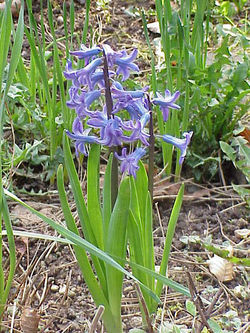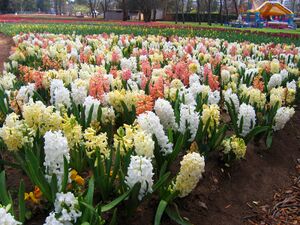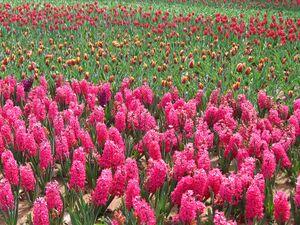Hyacinth
| subsp. var. | ||||||||||||||||||||||||||||||||||||||||||||||||||||||||
|---|---|---|---|---|---|---|---|---|---|---|---|---|---|---|---|---|---|---|---|---|---|---|---|---|---|---|---|---|---|---|---|---|---|---|---|---|---|---|---|---|---|---|---|---|---|---|---|---|---|---|---|---|---|---|---|---|

|
|
| ||||||||||||||||||||||||||||||||||||||||||||||||||||||
| ||||||||||||||||||||||||||||||||||||||||||||||||||||||||
| Standard Cyclopedia of Horticulture |
|---|
|
Hyacinth : Hyancinthus. Hyacinth Bean: Dolichos. Hyacinth, Grape: Muscari. Hyacinth, Water: Eichhornia.
|
| Hyacinthus {{{status}}} Fossil range: {{{fossil_range}}}
| ||||||||||||||||||||||||||||||||||||||||||||||||||||||||||||||||||
|---|---|---|---|---|---|---|---|---|---|---|---|---|---|---|---|---|---|---|---|---|---|---|---|---|---|---|---|---|---|---|---|---|---|---|---|---|---|---|---|---|---|---|---|---|---|---|---|---|---|---|---|---|---|---|---|---|---|---|---|---|---|---|---|---|---|---|
 Hyacinthus orientalis natural type | ||||||||||||||||||||||||||||||||||||||||||||||||||||||||||||||||||
| Plant Info | ||||||||||||||||||||||||||||||||||||||||||||||||||||||||||||||||||
| ||||||||||||||||||||||||||||||||||||||||||||||||||||||||||||||||||
| Scientific classification | ||||||||||||||||||||||||||||||||||||||||||||||||||||||||||||||||||
| ||||||||||||||||||||||||||||||||||||||||||||||||||||||||||||||||||
| [[{{{diversity_link}}}|Diversity]] | ||||||||||||||||||||||||||||||||||||||||||||||||||||||||||||||||||
| {{{diversity}}} | ||||||||||||||||||||||||||||||||||||||||||||||||||||||||||||||||||
| Binomial name | ||||||||||||||||||||||||||||||||||||||||||||||||||||||||||||||||||
| {{{binomial}}} | ||||||||||||||||||||||||||||||||||||||||||||||||||||||||||||||||||
| Trinomial name | ||||||||||||||||||||||||||||||||||||||||||||||||||||||||||||||||||
| {{{trinomial}}} | ||||||||||||||||||||||||||||||||||||||||||||||||||||||||||||||||||
| Type Species | ||||||||||||||||||||||||||||||||||||||||||||||||||||||||||||||||||
| {{{type_species}}} | ||||||||||||||||||||||||||||||||||||||||||||||||||||||||||||||||||
| species | ||||||||||||||||||||||||||||||||||||||||||||||||||||||||||||||||||
| Hyacinthus litwinowii | ||||||||||||||||||||||||||||||||||||||||||||||||||||||||||||||||||
| [[Image:{{{range_map}}}|{{{range_map_width}}}|]] | ||||||||||||||||||||||||||||||||||||||||||||||||||||||||||||||||||
| Synonyms | ||||||||||||||||||||||||||||||||||||||||||||||||||||||||||||||||||
| {{{synonyms}}} |
A Hyacinth is any plant of genus Hyacinthus, which are bulbous herbs formerly placed in the lily family Liliaceae but now regarded as the type genus of the separate family Hyacinthaceae. Hyacinths are native to the eastern Mediterranean region east to Iran and Turkmenistan. They are named after the Hyacinth from Greek mythology. Hyacinths are sometimes associated with rebirth. The Hyacinth flower is used in the Haftseen table setting for the Persian New Year celebration Norouz held during the Spring Equinox.
Only three species are currently recognised within the genus Hyacinthus. They are:
- Hyacinthus litwinowii
- Hyacinthus orientalis - Common, Dutch or Garden Hyacinth
- Hyacinthus transcaspicus
Some authorities place H. litwonowii and H. transcaspicus in the related genus Hyacinthella, leaving Hyacinthus as monotypic.
The Dutch, or Common Hyacinth of house and garden culture (H. orientalis, native to southwest Asia) was so popular in the 18th century that over 2,000 cultivars were cultivated in the Netherlands, its chief commercial producer. This hyacinth has a single dense spike of fragrant flowers in shades of red, blue, white, or yellow. A form of the common hyacinth is the less hardy and smaller blue- or white-petalled Roman hyacinth of florists. These flowers should have indirect sunlight and are to be moderately watered.
The related grape hyacinths (Muscari), sometimes called baby's-breath, are very low, mostly blue-flowered plants similar in appearance to hyacinths and are also commonly cultivated.
Several types of brodiea, deathcamas, squill, and other plants that were formerly classified in the lily family and have flower clusters borne along the stalk also have common names with hyacinth in them.
 |
 |